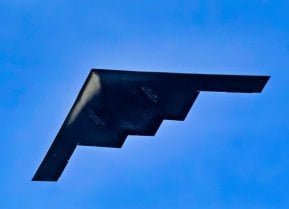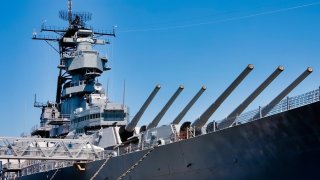Why the Iowa-Class Battleships Were the Most Formidable of Their Time
The Iowa-class battleships are among the most iconic vessels in naval history, symbolizing the peak of battleship design and firepower. Laid down in 1940 to counter the growing Japanese Navy, these massive ships measured 860 feet and displaced 58,460 tons, making them the largest and most heavily armed battleships ever built.
Summary and Key Points: The Iowa-class battleships are among the most iconic vessels in naval history, symbolizing the peak of battleship design and firepower. Laid down in 1940 to counter the growing Japanese Navy, these massive ships measured 860 feet and displaced 58,460 tons, making them the largest and most heavily armed battleships ever built.
-Armed with nine 16-inch Mark 7 guns capable of firing 2,700-pound shells over 24 miles, the Iowa-class ships were formidable in battle.
-Powered by eight Babcock & Wilcox boilers, they could reach speeds of over 32 knots. Despite only four being built, their impact was profound, serving in conflicts from WWII to Desert Storm.
Iowa-Class Battleships: Giants of the Sea That Shaped Histor
One of the most iconic vessels in the history of naval warfare is the battleship. From the late 19th century through the mid-20th century, the battleship was the pre-eminent naval vessel and the lynchpin of the world’s most powerful naval forces. Memorialized with a board game, Hasbro’s Battleship, the battleship transcended military culture and entered the public consciousness.
The battleship was, and in many respects is, what the general public thinks about when they think about a warship. And of all the different varieties of battleship, from Germany to America and from Britain to Japan, perhaps the most iconic of all was the Iowa class.
Introducing the Iowa-Class
The Iowa class was a large ship. Measuring 860 feet at the waterline with a beam of 109 feet and a draft measuring 37 feet, it displaced 58,460 tons. In fact, the ships were so large that they would have violated an international treaty, which capped battleship displacement at 45,700 tons, had it not been for the elevator clause of the Second London Naval Treaty. That clause allowed for larger builds given Japan’s withdrawal from the original treaty.
The Iowa wasn’t just large but well-armed, bristling with an array of devastating weaponry. Indeed, of all the battleships to ever sail, the Iowa was the most heavily armed.
First laid down in 1940, the Iowa class was designed as a thwart to the formidable, and expanding, capabilities of the Japanese Navy. As such, its ships were fitted with nine breech-loading 16-inch (406mm)/50-caliber Mark 7 naval guns. These were housed in three 3-gun turrets, configured with two turrets forward and one turret after, in the “2-A-1” configuration.
Each of the Mark 7 guns measured 66 feet long – 50 times longer than their 16-inch bore. Only about two-thirds of the Mark 7 gun was visible, as the gun house obscured the other third. The Mark 7s were truly massive, weighing about 239,000 pounds apiece. Each Mark 7 could fire a 2,700-pound armor-piercing shell at a muzzle velocity of 2,500 feet per second, to a range of up to 24 miles.
The Mark 7 was not the only gun nestled on the Iowa’s deck. It was joined by the Mark 12. While smaller than the Mark 7, the Mark 12 still weighed nearly 4,000 pounds, with a bore length of about 16 feet. The Mark 12 fired shells at about 2,500 feet per second and was classified as a “dual-purpose gun,” or DP, because it could be toggled to target between surface and air targets.
For propulsion, the Iowa class used eight Babcock & Wilcox boilers and four double reduction cross-compound geared turbines, with each turbine driving a single shaft. The power plant was sufficient to generate 212,000 horsepower, which could propel the Iowa at more than 32 knots per hour. To keep the power plant engaged, the Iowa class would sail with 9,000 tons of fuel, which enabled an operating range of 18,300 miles.
Only four Iowa-class battleships were built, but they made an outsized impact, serving in World War II, Korea, Vietnam, and Desert Storm.
About the Author: Harrison Kass
Harrison Kass is a defense and national security writer with over 1,000 total pieces on issues involving global affairs. An attorney, pilot, guitarist, and minor pro hockey player, Harrison joined the US Air Force as a Pilot Trainee but was medically discharged. Harrison holds a BA from Lake Forest College, a JD from the University of Oregon, and an MA from New York University. Harrison listens to Dokken.


